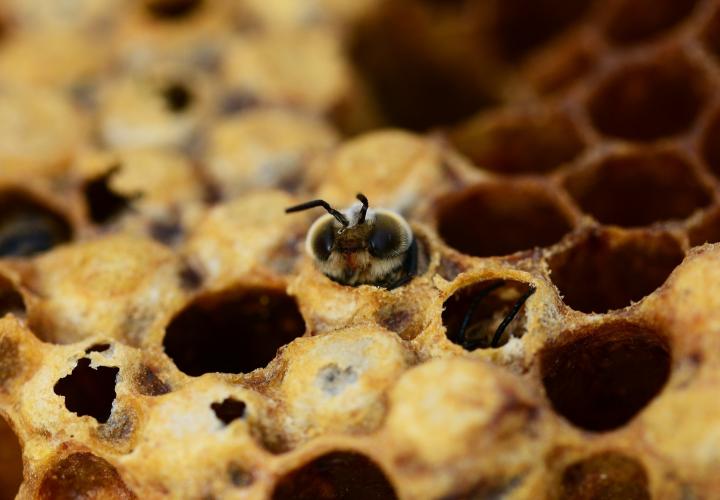
Keep An Eye Out For These Problems in Your Hive
ADVERTISEMENT
An update to this article:
I am a beekeeper of 3 years. Unfortunately, there are a few incorrect facts in
this article. The article is from 2017 and much has changed since it was written.
First: American and European Foulbrood are similar but with a very important difference.
American Foulbrood (AFB) cannot be cured. And it will quickly kill a hive. This stuff is nasty. You MUST destroy the hive. Or more importantly, your state Apiarist must destroy the hive. Yes, most states have a state apiarist. You should never, ever destroy a hive until you have had a professional (the state Apiarist) diagnose the real problem. (I have known of beekeepers that have destroyed their hives thinking it was AFB, it usually is not, only to find out later that it was an issue they could easily correct.) The state Apiarist must know when there is a problem with American Foulbrood as it can spread quickly if not detected early. They must, by law, quarantine all beehives within 6 miles of the affected hive. Bees can travel up to 5 miles to forage, including robbing from weak, AFB infected hives.
European Foulbrood, on the other hand, can be treated. And the hives do not need to
be destroyed. Contact your state apiarist. Due to changes in law by the Federal
Government, Terramycin and other antibiotics can no longer be bought “off the shelf” for treating any livestock (yes bees are considered livestock). Veterinarians must now be involved in the process.
Second: Conventional wisdom now states that you should never use an antibiotic in
your hive unless a problem has been diagnosed.
Third: Verroa Mites (Verroa Destructor): This is an old article and does not incorporate
new research revealed last year. The author is correct in that the mites do destroy bee
larvae. But the new research shows that the mites do not feed on the bees blood, but
on the bee’s belly fat that contains most of their antibodies. Once the fat is
compromised, the bees succumb to viruses normally present in their bodies. We prefer
formic acid to Apistan to treat for Verroa. We use Mite-away quick strips as a once (or twice) a year mite prevention. When applied at the correct time of the year, it keeps the mite load down to
acceptable levels. Very difficult to achieve a mite-free hive in the U.S.
Anyway, pretty neat research. If you are interested, you can look his video up on youtube - Varroa Does Not Feed on Hemolymph by Samuel Ramsey . It is 1 hr and 14 minutes, a little long. Watch as much as you like.
Dr. Samuel Ramsey is from the University of Maryland. Dr. Ramsey determined how
Varroa actually feed on honeybees and the problems it causes in honeybees.
Thank you so very much for updating us on these facts. I will watch the video.
I'm hooked on fresh honeycomb! I am definitely interested in buying my own bee hive and producing my own fresh honey just for my family.
I would like to know what other bee keepers are using for the non pesticide control of ants. I can count 6 different species of them trying to invade my apairy. Please advise.thanx
Have you tried borax, a 'green' pest management co. I know uses this in a trap of sorts.mail me and I'll send a pic. Jim
Please see NYBeeWellness.org, a USDA funded website to help beekeepers recognize & diagnose honey bee disease.
A note on CCD: check out www.vanishingbees.com. CCD has been linked to pesticide use. Big surprise I know. Great documentary on it, also available on Netflix. Keep our bees healthy!!










